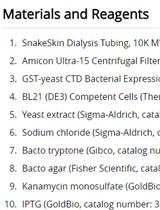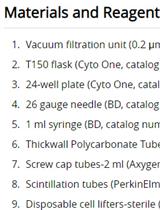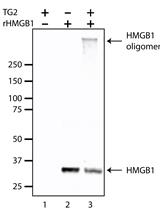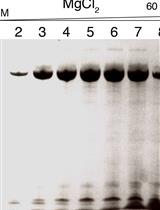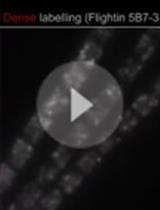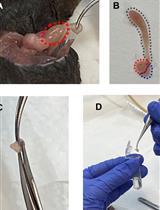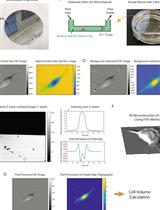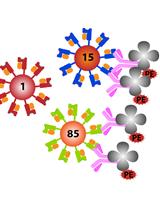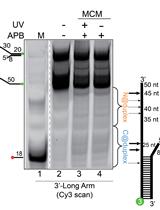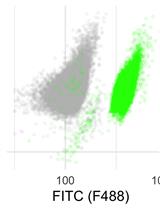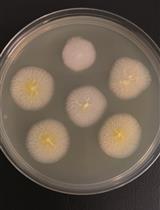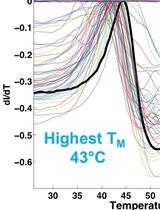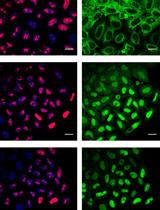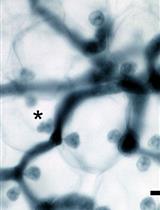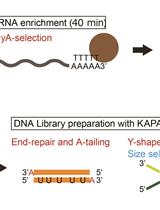往期刊物2020
卷册: 10, 期号: 12
生物化学
Electrophoretic Mobility Shift Assay of in vitro Phosphorylated RNA Polymerase II Carboxyl-terminal Domain Substrates
体外磷酸化的RNA聚合酶II羧基末端域底物的电泳迁移率测定
Preparation of HeLa Total Membranes and Assay of Lipid-inhibition of Serine Palmitoyltransferase Activity
HeLa全膜的制备及其对丝氨酸-棕榈酰转移酶活性的抑制作用
In vitro Crosslinking Reactions and Substrate Incorporation Assays for The Identification of Transglutaminase-2 Protein Substrates
转谷氨酰胺酶-2蛋白底物的体外交联反应和底物掺入鉴定
生物物理学
Preparation of Yeast tRNA Sample for NMR Spectroscopy
酵母tRNA样品的核磁共振制备
细胞生物学
Superresolution Microscopy of Drosophila Indirect Flight Muscle Sarcomeres
果蝇间接飞行肌肌节的超分辨显微镜观察
Quantification of Protein Kinase A (PKA) Activity by An in vitro Radioactive Assay Using the Mouse Sperm Derived Enzyme
用小鼠精子衍生酶体外放射性测定蛋白激酶A(PKA)活性
Single Cell Volume Measurement Utilizing the Fluorescence Exclusion Method (FXm)
荧光排斥法(FXm)测量单细胞体积
免疫学
Assessments of HLA-I Specificities of Anti-HLA-I Monoclonal Antibodies Using Solid Phase Bead Arrays
固相微珠技术评价抗HLA-I单克隆抗体的HLA-I特异性
微生物学
Site-specific DNA Mapping of Protein Binding Orientation Using Azidophenacyl Bromide (APB)
叠氮苯酰溴(APB)定位蛋白质结合方向的DNA图谱
Live Cell Measurement of the Intracellular pH of Yeast by Flow Cytometry Using a Genetically-Encoded Fluorescent Reporter
一种基于流式细胞术的利用基因编码荧光报告测定酵母活细胞内pH值的方法
Genomic Edition of Ashbya gossypii Using One-vector CRISPR/Cas9
利用一个CRISPR/Cas9载体对棉囊阿舒氏酵母进行基因组编辑
Identification of Buffer Conditions for Optimal Thermostability and Solubility of Herpesviral Protein UL37 Using the Thermofluor Assay
用热荧光法鉴定疱疹病毒蛋白UL37的最佳热稳定性和溶解度的缓冲液条件
神经科学
An Alternative Maze to Assess Novel Object Recognition in Mice
一种评价小鼠新目标识别的替代迷宫
Quantitative Nucleocytoplasmic Transport Assays in Cellular Models of Neurodegeneration
神经退行性细胞模型中核质转运的定量分析
植物科学
Maintenance and Quantitative Phenotyping of the Oomycete-plant Model Pathosystem Hyaloperonospora arabidopsidis–Arabidopsis
卵菌-植物模型病理系统(活体营养型卵菌–拟南芥)的维持和定量表型分析
系统生物学
Low-cost and Multiplexable Whole mRNA-Seq Library Preparation Method with Oligo-dT Magnetic Beads for Illumina Sequencing Platforms
Oligo-dT磁珠用于Illumina测序平台的低成本和可复用的完整mRNA-Seq文库制备方法



